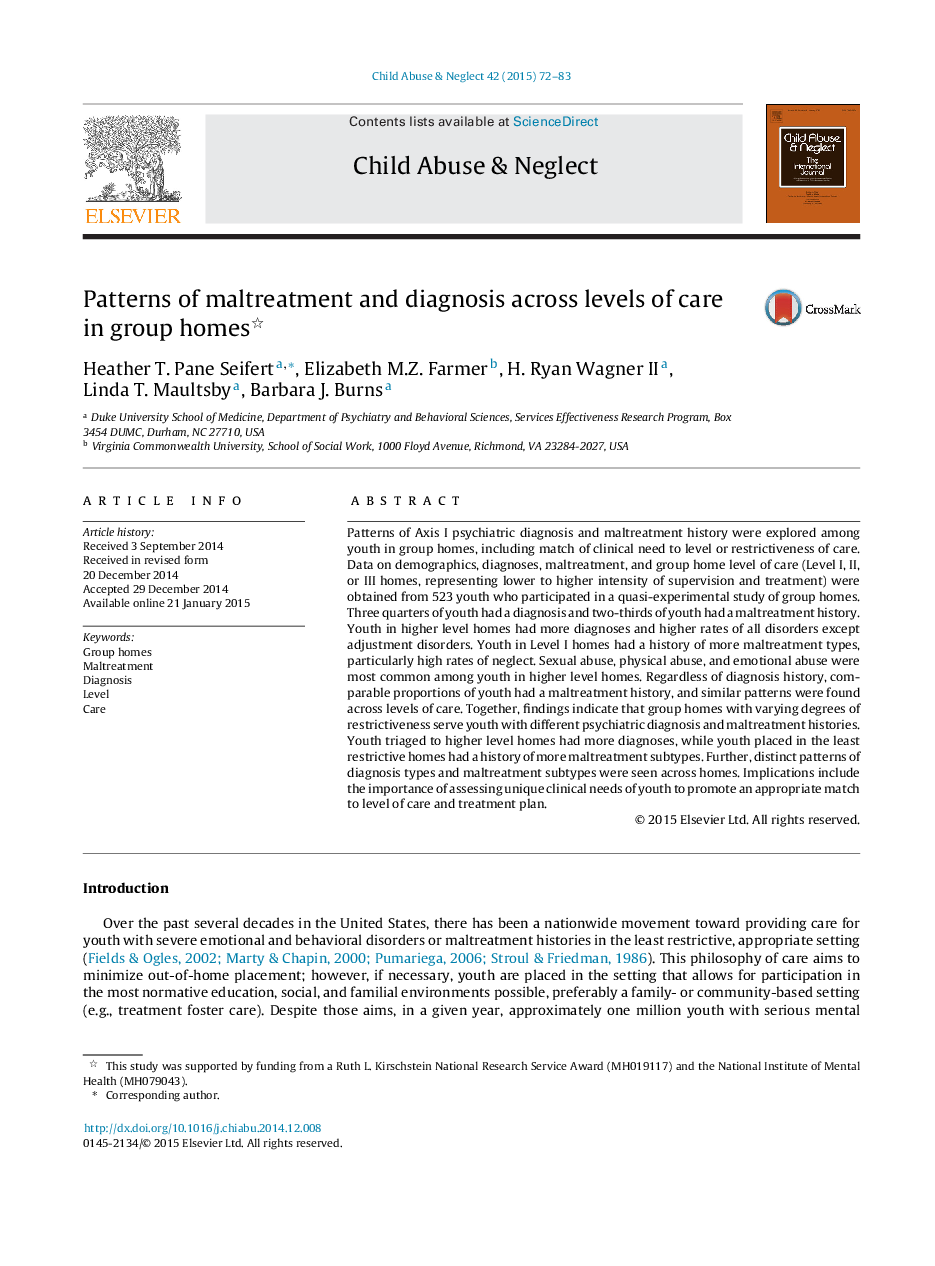| Article ID | Journal | Published Year | Pages | File Type |
|---|---|---|---|---|
| 6832647 | Child Abuse & Neglect | 2015 | 12 Pages |
Abstract
Patterns of Axis I psychiatric diagnosis and maltreatment history were explored among youth in group homes, including match of clinical need to level or restrictiveness of care. Data on demographics, diagnoses, maltreatment, and group home level of care (Level I, II, or III homes, representing lower to higher intensity of supervision and treatment) were obtained from 523 youth who participated in a quasi-experimental study of group homes. Three quarters of youth had a diagnosis and two-thirds of youth had a maltreatment history. Youth in higher level homes had more diagnoses and higher rates of all disorders except adjustment disorders. Youth in Level I homes had a history of more maltreatment types, particularly high rates of neglect. Sexual abuse, physical abuse, and emotional abuse were most common among youth in higher level homes. Regardless of diagnosis history, comparable proportions of youth had a maltreatment history, and similar patterns were found across levels of care. Together, findings indicate that group homes with varying degrees of restrictiveness serve youth with different psychiatric diagnosis and maltreatment histories. Youth triaged to higher level homes had more diagnoses, while youth placed in the least restrictive homes had a history of more maltreatment subtypes. Further, distinct patterns of diagnosis types and maltreatment subtypes were seen across homes. Implications include the importance of assessing unique clinical needs of youth to promote an appropriate match to level of care and treatment plan.
Related Topics
Health Sciences
Medicine and Dentistry
Perinatology, Pediatrics and Child Health
Authors
Heather T. Pane Seifert, Elizabeth M.Z. Farmer, H. Ryan II, Linda T. Maultsby, Barbara J. Burns,
